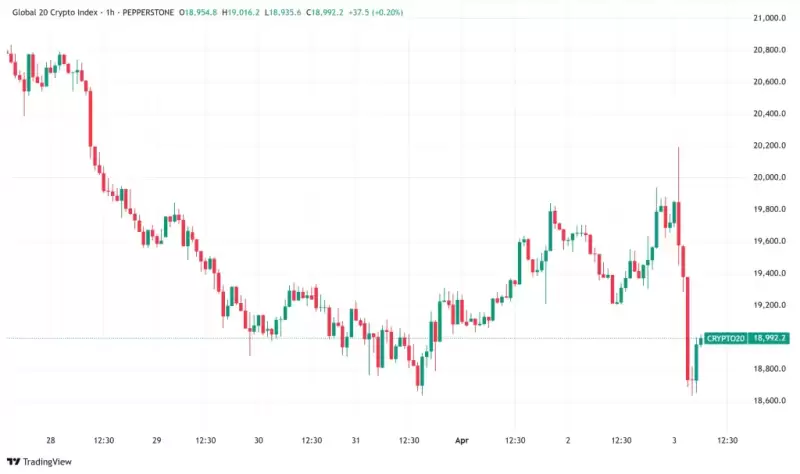 |
|
 |
|
 |
|
 |
|
 |
|
 |
|
 |
|
 |
|
 |
|
 |
|
 |
|
 |
|
 |
|
 |
|
 |
|
SUAL(USUAL)是一款近期表现亮眼的新型稳定币,除了币价涨幅较大之外,USUAL官方质押通道所呈现的惊人收益率也吸引了不少用户的目光。

Usual (USUAL), a new stablecoin, has recently seen strong performance. While the price of the coin has seen sharp increases, the incredible yields offered by USUAL's official staking channels have also garnered attention from many users.
As shown in the image below, information on Usual's official website indicates that the current real-time APY for staking USUAL is as high as 22037%.
Odaily Note: Staking USUAL can unlock governance rights and obtain 10% of newly issued USUAL, which is also the source of USUAL staking income.
Upon clicking on the staking homepage and entering the pre-deposited USUAL amount, the calculation simulation result is exaggerated and more intuitive - assuming that 10,000 USUAL are pledged, it is expected that 2,203,752 USUAL can be obtained in a year, and 6,037 USUAL can be obtained every day...
When many users first see these numbers, their reaction is "Isn't this just picking up money?" But is this really the case? In the following, we will reveal the magic of USUAL's staking yield numbers through a series of calculations.
APR vs APY
Older DeFi players may be more aware that although APR and APY, two seemingly similar indicators, are often used to measure the returns of cryptocurrency investments, the actual impact on returns is very different.
In short, APR does not take into account the effects of compound interest, while APY does incorporate the effects of compound interest into its calculations, often resulting in APY returns often appearing to be higher.
For example, if you deposit $1,000 into a pool with an APR of 100%, then at the end of one year your principal plus earnings will be $2,000; but assuming that the pool uses a daily compounding mechanism, that is, the interest is calculated and reinvested every day, then at the end of one year your principal plus earnings will be approximately $2,718, corresponding to an APY of 171.8%.
The conversion between APR and APY can be calculated based on the following consensus, where n is the compounding frequency. If daily compounding is adopted over a one-year period, n is 365.
APY = (1 + APR/n)^n - 1
Usual's math magic
Back to the USUAL staking scenario, the 22037% here is the APY income, and the official clearly mentioned that it will be automatically compounded every day.
According to the formula in the image above, APY is 22037%, n is 365, and the APR calculation result is 543.65%, corresponding to a daily yield of approximately 1.49%.
Some friends may ask, USUAL's pledge mechanism clearly provides a daily compounding mechanism, why should it be ignored? The reason is that under the compounding model, daily income will gradually increase as the timeline lengthens, and when evaluating short-term income, the APR number is actually more reliable.
Let’s take the example mentioned in the previous article, “Assuming 10,000 USUALs are pledged, it is expected that 6,037 USUALs can be obtained every day within one year”.
If the deposit is really made for a full year, the calculation result is indeed valid if the income situation remains unchanged. However, in reality, after the user pledges 10,000 USUAL, he will not receive 6,037 USUAL in equal amounts every day.
The reality is that after a user stakes 10,000 USUAL, he will only receive about 149 USUAL on the first day (daily yield of 1.49%), and the daily income will gradually increase with compound interest, because the pledged principal will continue to grow with the reinvestment, and the number 6037 is only the daily average over a one-year cycle - note that all of this is based on the premise that the income situation remains unchanged.
Potential risks
Putting aside users who make long-term pledges for other reasons, if you rush to buy coins and pledge just because of the high interest rate of 22037%, please be sure to understand the following risks.
Eliminate the risk of pledge wear and tear
It is worth mentioning that USUAL’s unstaking requires a mandatory 10% fee, which means that based on a daily yield of 1.49%, it will take at least a week for users to recover the 10% unstaking cost after staking.
Risk of increasing pledge scale
The scale of USUAL staking may further expand, thereby diluting the yield.
The current scale
免责声明:info@kdj.com
所提供的信息并非交易建议。根据本文提供的信息进行的任何投资,kdj.com不承担任何责任。加密货币具有高波动性,强烈建议您深入研究后,谨慎投资!
如您认为本网站上使用的内容侵犯了您的版权,请立即联系我们(info@kdj.com),我们将及时删除。
-

- PI网络面临其投资者社区的反对,因为人们对透明度增长的担忧
- 2025-04-03 10:50:12
- PI网络目前正面临其投资者社区的大量评估,因为人们对透明度增长的担忧。
-

-

-

- Iotex将于4月3日在华盛顿特区领导迪瓦尔教育日
- 2025-04-03 10:45:12
- 代表将与国会议员会面,以展示分散的物理基础设施网络(DEPIN)如何将加密货币整合到现实世界中
-

- 历史数据表明,比特币的价格通常在4月平均增加12.98%。
- 2025-04-03 10:40:12
- 结果,加密货币社区经常将4月视为比特币特别有利和令人印象深刻的月份 - 有些人幽默地将其称为“ Upril”。
-

- Holo将在YouTube上托管直播
- 2025-04-03 10:40:12
- Holo将于4月10日在UTC在YouTube举办直播。该会议将提供有关最新进度和未来计划的更新。
-

- LivePeer将于4月7日举行社区电话,重点介绍其链财政部的治理,资金和战略方向。
- 2025-04-03 10:35:13
- LivePeer是一项分散的协议,利用以太坊区块链使视频处理领域民主化。
-

-

- PI网络未能列入二手列表
- 2025-04-03 10:30:12
- 当Binance列出倡议的投票开始时,该交易所已第二次转移了PI网络。




























































